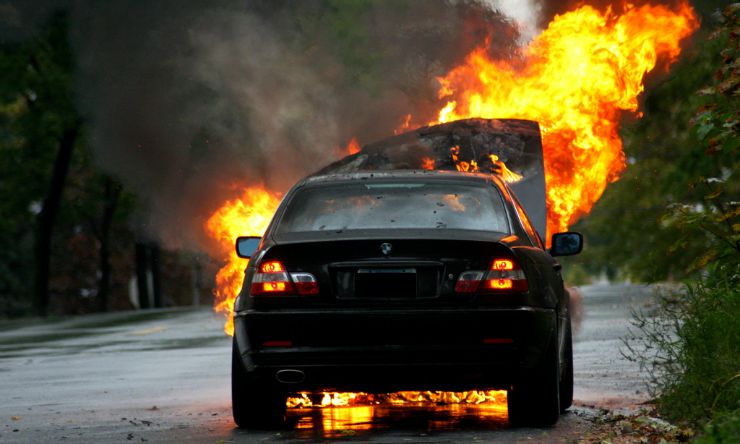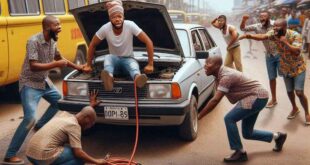An engine is designed to contain combustion within it’s shells, after all that’s the way the engine generates power. But there are cases an engine can catch fire. This is often associated with bad electrical wiring and faulty fuel system. When a spark from a faulty wiring gets in contact with a leaking fuel system fire is ignited. In order to avoid this from happening, you should always check the following when doing a repair check.
- Fuses that blow repeatedly
- Spilled oil under the hood left over from an oil change
- Oil or other fluid leaks under the vehicle
- Cracked or loose wiring, or wiring with exposed metal
- Very loud sounds from the exhaust system
- Rapid changes in fuel level, oil levels, or engine temperature
- A missing cap from the oil filler
- Broken or loose hoses

But when a fire do occur:
- Stop the car and turn off the ignition.
- Get every person out of the car, and don’t allow anyone to go back to retrieve personal items.
- Always make sure your fire extinguisher is within immediate reach (regularly check your fire extinguisher to know if it still has good pressure. Your can order one HERE)
- If the fire is just starting, pop the hood of the car and begin to apply the fire extinguisher to the bottom of where the flame is coming
- If the fire gets out of control, move far from the burning vehicle to avoid the flames and toxic fumes—at least 100 feet—and also keep bystanders back.
- Alert oncoming traffic if possible.
 Spot Dem Everything About Cars
Spot Dem Everything About Cars






